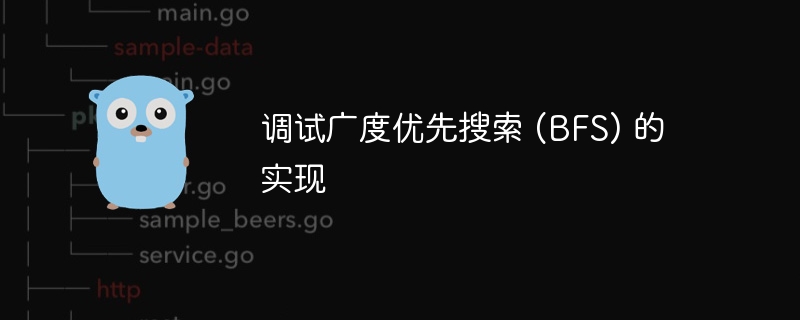
php小編柚子為您介紹除錯廣度優先搜尋(BFS)的實作。廣度優先搜尋是一種用於圖和樹的遍歷演算法,它從起始節點開始,逐層地存取相鄰節點,直到找到目標節點。在實作BFS演算法時,調試是非常重要的環節,它可以幫助我們發現程式碼中的錯誤和邏輯問題,提高程式的效率和準確性。本文將為您詳細介紹如何調試BFS演算法,希望能對您的學習和實踐有所幫助。
我在 3d 空間中有 3d 體素。它們由 x, y, z 索引。它們被標記為 full 或 empty。我嘗試有效地計算由鄰居 full 體素組成的組件數量。
我有以下程式碼來實現廣度優先搜尋(bfs)演算法。每個體素以 [3]int{x, y, z} 表示。
// Count separate components consisting of disconnected finite elements.
func (vg *VoxelGrid) CountComponents() int {
// Map key is (x, y, z) index of voxel.
visited := make(map[[3]int]bool)
count := 0
for z := 0; z < vg.Len.Z; z++ {
for y := 0; y < vg.Len.Y; y++ {
for x := 0; x < vg.Len.X; x++ {
if !visited[[3]int{x, y, z}] {
count++
vg.bfs(visited, [3]int{x, y, z})
}
}
}
}
return count
}
// Algorithm: breadth-first search (BFS).
// This is much faster than depth first search (DFS) algorithm.
func (vg *VoxelGrid) bfs(visited map[[3]int]bool, start [3]int) {
queue := [][3]int{start}
visited[start] = true
for len(queue) > 0 {
v := queue[0]
queue = queue[1:]
neighbors := vg.getNeighbors(v)
for _, n := range neighbors {
if !visited[n] {
visited[n] = true
queue = append(queue, n)
}
}
}
}
// It returns a list of neighbor voxels that are full, i.e. not empty.
func (vg *VoxelGrid) getNeighbors(v [3]int) [][3]int {
var neighbors [][3]int
for i := -1; i <= 1; i++ {
for j := -1; j <= 1; j++ {
for k := -1; k <= 1; k++ {
if i == 0 && j == 0 && k == 0 {
continue
}
x := v[0] + i
y := v[1] + j
z := v[2] + k
if x >= 0 && x < vg.Len.X &&
y >= 0 && y < vg.Len.Y &&
z >= 0 && z < vg.Len.Z {
// Index is valid.
} else {
continue
}
// Is neighbor voxel empty or not?
if vg.IsNotEmpty(x, y, z) {
neighbors = append(neighbors, [3]int{x, y, z})
}
}
}
}
return neighbors
}
上面的實作無法正常工作。對於僅應包含 8 元件的簡單模型,它會傳回元件計數為 1224:
我透過 vs code 偵錯器單步調試了代碼。但我無法找出這個錯誤。有人在程式碼中看到任何可疑的東西嗎?有什麼提示可以指引我正確的方向嗎?
問題是您還在 empty 體素上呼叫 bfs。
在 countcomponents 中,已驗證 bfs 僅在尚未訪問的體素上調用(良好):
if !visited[[3]int{x, y, z}] {...但它缺少測試該體素是否為full (不好),並且bfs 會很樂意將其添加到隊列中,期望它是full。因此,每個 empty 體素也被計為一個(1 體素大小)組件。
以上是調試廣度優先搜尋 (BFS) 的實現的詳細內容。更多資訊請關注PHP中文網其他相關文章!




